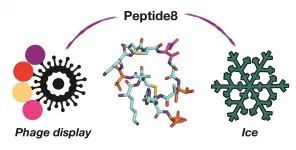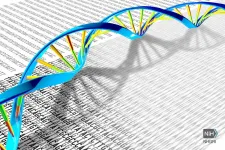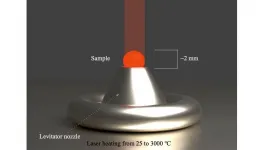Map of metabolic changes after heart attack holds clues to recovery
Researchers have constructed a map of metabolic changes that occur across multiple tissues after a heart attack in the hope of finding targets for better treatments
2021-05-11
(Press-News.org) Researchers have mapped out the changes in metabolism that occur after a heart attack, publishing their findings today in the open-access eLife journal.
Their study in mice reveals certain genes and metabolic processes that could aid or hinder recovery, and might be good targets for treatments to prevent damage after a heart attack.
"Although some studies have looked at how changes in individual body tissues underlie mechanisms of disease, the crosstalk between different tissues and their dysregulation has not been examined in heart attacks or other cardiovascular-related complications," explains first author Muhammad Arif, a PhD student at KTH Royal Institute of Technology, Stockholm, Sweden. "In this study, we performed an integrated analysis of heart and other metabolically active tissues using a mouse model of heart attack and used systems biology approaches to get a systematic picture of the metabolic changes that occur."
Systems biology has aided the discovery of new treatment approaches in multiple diseases. Rather than take systems apart and analyse the components, it involves taking measurements from different cells and tissues and using them to reproduce the system being studied. In this research, the team used a systems biology approach called co-expression networks (CNs) to reveal how the functions of genes in different tissues were linked together.
First, they measured the activity of all the genes in four tissue types: heart, fat, skeletal muscle and the liver in mice that had a heart attack. They compared these with the gene activity in mice that did not have a heart attack to generate sets of differentially expressed genes (DEGs) unique to each tissue. Next, in the co-expression network analysis, they looked at the top 5% of genes that were most strongly connected within the four different tissues. They then used the DEG results to see how those top 5% of genes were altered 24 hours after a heart attack.
They found key clusters of genes that were altered in different tissues after a heart attack. In the heart and muscle, the gene changes tended to be linked to energy production and muscle contraction. In the liver, the gene changes were related to fat transport and metabolism, and the metabolism of cell-protecting substances such as glutathione.
The team then used this information to build a multi-tissue model of the metabolic response to a heart attack and compared their results with other studies of heart tissue. They found that four genes were consistently altered across all studies. These genes are known to play roles in energy production, muscle contraction and protein production, and at least one of them is being explored as a drug target for cardiovascular disease.
Taken together, the results reveal a downregulation of heart-specific functions and upregulation of fat metabolism and inflammation in the heart, muscle and fat tissue after a heart attack. By contrast, the team saw a different response in the liver where inflammation was reduced.
"Our integrative analysis highlights both common and tissue-specific biological responses to a heart attack across a range of metabolically active tissues," concludes senior author Adil Mardinoglu, Professor of Systems Biology at KTH Royal Institute of Technology, Sweden, and King's College London, UK. "The approach demonstrates a way of using multi-tissue gene activity data to identify changes in biological processes and pathways and systematically explore the effects of a disease. This opens up new opportunities for future research into the pathways identified, and the potential to use a similar approach to understand other complex human diseases."
INFORMATION:
Media contact
Emily Packer, Media Relations Manager
eLife
e.packer@elifesciences.org
+44 (0)1223 855373
About eLife
eLife is a non-profit organisation created by funders and led by researchers. Our mission is to accelerate discovery by operating a platform for research communication that encourages and recognises the most responsible behaviours. We aim to publish work of the highest standards and importance in all areas of biology and medicine, while exploring creative new ways to improve how research is assessed and published. eLife receives financial support and strategic guidance from the Howard Hughes Medical Institute, the Knut and Alice Wallenberg Foundation, the Max Planck Society and Wellcome. Learn more at https://elifesciences.org/about.
To read the latest Computational and Systems Biology research published in eLife, visit https://elifesciences.org/subjects/computational-systems-biology.
And for the latest in Medicine, see https://elifesciences.org/subjects/medicine.
ELSE PRESS RELEASES FROM THIS DATE:
2021-05-11
Controlling, and mitigating the effects of ice growth is crucial to protect infrastructure, help preserve frozen cells and to enhance texture of frozen foods. An international collaboration of Warwick Scientists working with researchers from Switzerland have used a phage display platform to discover new, small, peptides which function like larger antifreeze proteins. This presents a route to new, easier to synthesise, cryoprotectants.Caption: Using viruses (phage display) to identify the one molecule in a billion (peptide8) that controls the formation of ice. Credit: University of Warwick
Ice binding proteins, which includes antifreeze proteins, are produced by a large range of species from fish, ...
2021-05-11
An investigational gene therapy can safely restore the immune systems of infants and children who have a rare, life-threatening inherited immunodeficiency disorder, according to research supported in part by the National Institutes of Health. The researchers found that 48 of 50 children who received the gene therapy retained their replenished immune system function two to three years later and did not require additional treatments for their condition, known as severe combined immunodeficiency due to adenosine deaminase deficiency, or ADA-SCID. The findings were published today in the New England Journal of Medicine.
ADA-SCID, ...
2021-05-11
Low doses of a four-drug combination helps prevent the spread of cancer in mice without triggering drug resistance or recurrence, shows a study published today in eLife.
The findings suggest a new approach to preventing cancer metastasis in patients by simultaneously targeting multiple pathways within a metastasis-promoting network. They may also help identify people who would most likely benefit from such treatment.
Metastasis, the spread of cancerous cells through the body, is a common cause of cancer-related deaths. Current approaches to treating metastatic cancer have focused on high doses of individual drugs or drug combinations to hinder pathways that promote the spread of cancer cells. But these approaches can be toxic to the patient, and may inadvertently activate other pathways ...
2021-05-11
A new study from the University of Chicago has found that the photosynthetic bacterium Synechococcus elongatus uses a circadian clock to precisely time DNA replication, and that interrupting this circadian rhythm prevents replication from completing and leaves chromosomes unfinished overnight. The results, published online on May 10 in Proceedings of the National Academy of the Sciences, have implications for understanding how interrupted circadian rhythms can impact human health.
Circadian rhythms are the internal 24-hour clock possessed by most organisms on earth, regulating ...
2021-05-11
Argonne scientists across several disciplines have combined forces to create a new process for testing and predicting the effects of high temperatures on refractory oxides.
Cast iron melts at around 1,200 degrees Celsius. Stainless steel melts at around 1,520 degrees Celsius. If you want to shape these materials into everyday objects, like the skillet in your kitchen or the surgical tools used by doctors, it stands to reason that you would need to create furnaces and molds out of something that can withstand even these extreme temperatures.
That's where refractory oxides come in. These ceramic materials can stand up to blistering heat and retain their shape, which makes them useful for all kinds of things, from kilns ...
2021-05-11
May 11, 2021 - Like other medical specialties at the start of the COVID-19 pandemic, orthopaedic surgery rapidly pivoted from in-person visits to remote appointments via telemedicine. Analysis of that initial experience finds that some groups of patients faced persistent or worsening disparities as the shift to telemedicine occurred, reports Clinical Orthopaedics and Related Research® (CORR®), a publication of The Association of Bone and Joint Surgeons®. The journal is published in the Lippincott portfolio by Wolters Kluwer.
"We found concerning disparities in access ...
2021-05-11
TAMPA, Fla. - A hallmark of cancer is its ability to evade the immune system. It is why researchers are focused on finding new strategies and targets to jumpstart the immune system so it can mount a response against tumors. One such target is the inhibitory receptor T-cell immunoglobulin and mucin domain 3 (TIM-3), a protein that is overexpressed in many different types of cancer and is associated with poor patient outcomes. It is known to block the activity of immune cells, such as dendritic cells, but how remains unclear. In a new article published in the journal Immunity, Moffitt Cancer Center researchers show that TIM-3 inhibits the STING signaling pathway in dendritic cells, thereby blocking their ability to elicit an immune response.
Dysregulation ...
2021-05-11
Point:
Novel chiral diacid monomers were synthesized.
Chirally interactive BioNylons were prepared.
BioNylon showed thermal/mechanical performances than conventional Nylons.
BioNylons disintegrated and degraded with pepsin.
Summary:
Marine plastic waste problems have been more serious year by year. One of the worst issues is that creatures in ocean are going extinct by mistakenly swallowing them.. Conventional biodegradable plastics are degradable in digestive enzymes, but their performances are too low to use in society. In this study, researchers from JAIST have used bio-derived resources such as itaconic acid and amino acid for the syntheses of high-performance BioNylons having the pepsin degradation function.
Ishikawa, ...
2021-05-11
Quantum mechanics can be used to create more stable and more easily produced organic solar cells. These are the findings of new research from the University of Gothenburg.
Organic solar cells have many advantages compared with traditional silicon-based solar cells. They can be manufactured cheaply at a large scale using printing presses, and they are light, malleable and flexible. The problem is that today's organic solar cells are not as stable and effective as silicon-based solar cells. In a new study, a research group has taken on this problem and found a way that can lead to more cost-effective solar cell technology.
"There are excellent opportunities for utilising quantum efficiencies to change different chemical ...
2021-05-11
The Sturtian Snowball Earth glaciation (717~660 million years ago) represents the most severe icehouse climate in Earth's history. Geological evidence indicates that, during this glaciation, ice sheets extended to low latitudes, and model simulations suggest global frozen ocean as well as a prolonged shut-down of the hydrological cycles. The Snowball Earth hypothesis poses that the Sturtian global glaciation is directly triggered by intense continental weathering that scavenges atmospheric CO2, while the global frozen condition is terminated by ...
LAST 30 PRESS RELEASES:
[Press-News.org] Map of metabolic changes after heart attack holds clues to recovery
Researchers have constructed a map of metabolic changes that occur across multiple tissues after a heart attack in the hope of finding targets for better treatments





